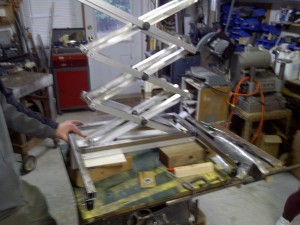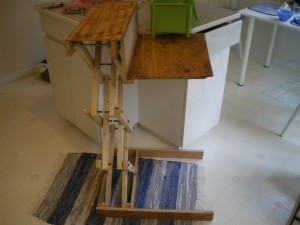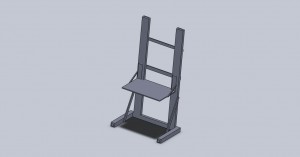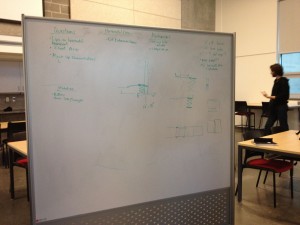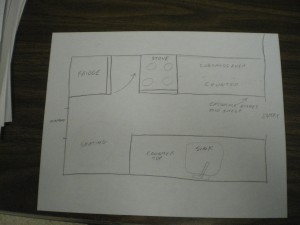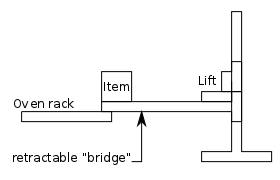Wrapping Up
Just before and during reading break, we began implementing our chosen design. We had a final meeting with Ron and George at Vancouver General Hospital where we finalized everything, and wrote up some measurements. We also decided upon the orientation of the linear actuator on the scissor lift. The next day, we visited Doug at the UBC Metal Workshop and explained to him what we wanted to build. Before meeting with Doug, we drew up sketches of the scissor lift with parts required such as nuts and washers, as well as exact dimensions. Directly after speaking with him, we went to the Metal Supermarket in Burnaby and purchased the required aluminum tubes and rods that we had been instructed to by Doug and Ron.
Following that, we began construction of the scissor lift at the UBC Metal Workshop. After two days at work at the shop, the scissor lift was ready to go. We then brought it to Ron’s house, where we constructed a steel base with wheels. At Ron’s house we realized that we had welded the scissor lift incorrectly so that same day, we headed back to the Metal Supermarket and purchased extra aluminum rods. After welding it properly, we brought the lift back to Ron’s house and worked on a way of connecting the scissor lift to the base. After running multiple tests we were pleased that it the scissor lift could be easily mounted to the base, and Ron had also provided us with an alternate, possibly more powerful power source, a modified motor. Below are some pictures of our product.
Ron was very pleased with the work we had put in and said that he would take the project from here. However, we still plan to help build the platform at the top, as well as assist with some of the final stages of fabrication, such as painting the device.
Project Experience
Working on this project has been a great experience. We have gained valuable team and communication skills. Overall, the process of developing a concept based on a list of necessary items and constraints was the same as in the overhead walkway bridge for CIVIL 201. However, one very big difference with this project was that there were more stakeholders within the project that we had to stay in contact with. This ended up being great for our project as it increased the amount of resources we had substantially. Finally, we also managed this project differently than the CIVIL 201 project as we were constantly building different mock-up designs to see if they were viable. After going through multiple designs, just as we did for CIVIL 201, we finally decided upon the most optimal and user friendly one. We found that building a mock-up design, no matter how crude, was very helpful in picking the final design.

